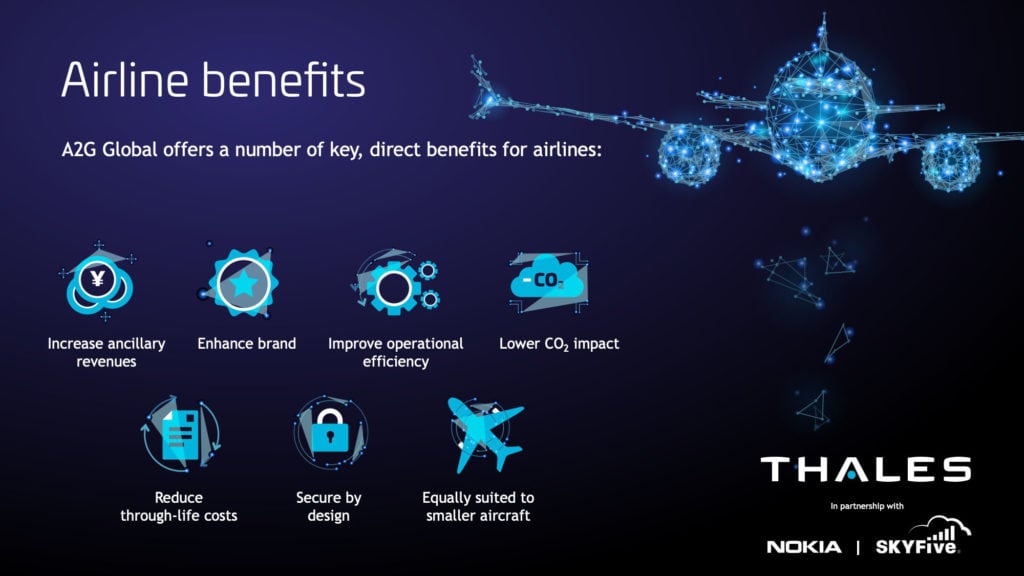Consortium Pushes ATG Option for In-Flight Connectivity
Share

A year ago, the options for deploying an air-to-ground (ATG) in-flight connectivity (IFC) network were limited to Gogo’s offering in North America and the EAN service from Inmarsat in Europe, which depends heavily on the terrestrial component. Now SkyFive, spun off from Nokia’s core business, is back again, this time with Thales UK, pushing its ATG offerings as it seeks new markets around the globe.
Following a successful rollout across Europe, Thales UK, Nokia and SkyFive are looking to launch a new 4G LTE Air to Ground (A2G) solution in more locations across the globe.
The companies highlight the reduced costs of delivering the IFC services relative to satellite-based solutions, as well as reduced emissions. This is mostly as a result of smaller, lighter antennas that do not increase fuel burn as much as satellite antenna/radome combinations. The service also offers lower latency because the radio signals do not have to travel to satellites in geostationary orbit before being relayed back to earth.
“The project will bring industry disrupting performance … with reliable Wi-Fi and low transmission latency delivered with low upfront investment and operational costs.” – Andy Humphries, Thales UK
The system can also be more easily tuned to split the upstream and downstream link capacities, a feature that the companies argue makes them more compelling for business travelers who might be uploading large presentations or conducting video conferences.
Andy Humphries, managing director of Flight Avionics for Thales UK, sees the collaborative development effort of the three companies as part of the platform’s strength, “We have used our expertise to deliver proven fast and reliable aircraft hardware and software solutions underpinned by a robust worldwide support network. Combined with SkyFive’s specialism in A2G services and Nokia’s mobile network infrastructure, the project will bring industry disrupting performance for passengers and airlines alike, with reliable Wi-Fi and low transmission latency delivered with low upfront investment and operational costs.”
Humphries also suggests that recovery for the aviation sector can be boosted by improved in-flight connectivity solutions on board as passengers return.
While the offering has made some inroads for network testing and deployment in Saudi Arabia and China (along with the EAN network), the companies are still looking for a true commitment to deploy the system.


